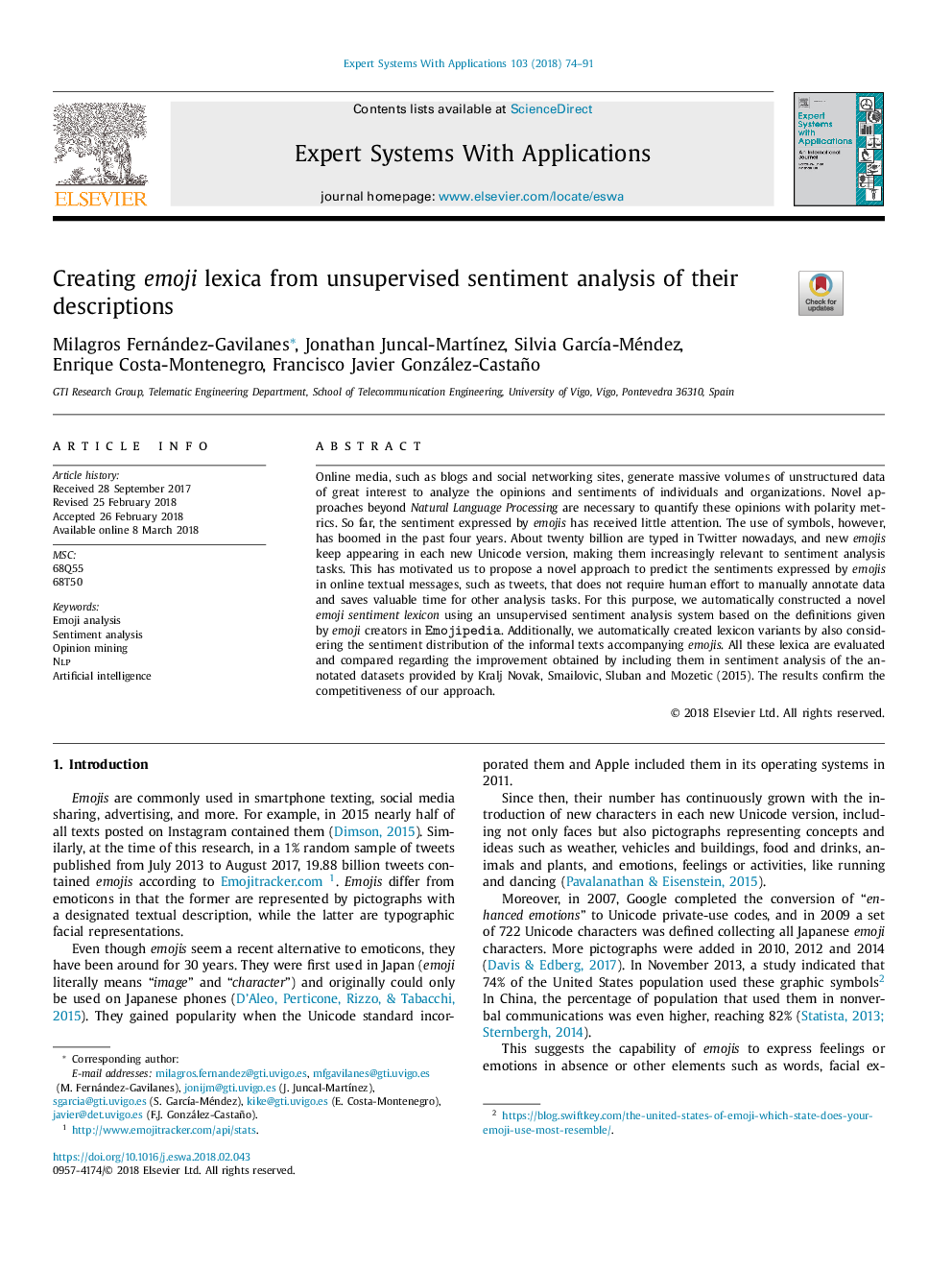| Article ID | Journal | Published Year | Pages | File Type |
|---|---|---|---|---|
| 6855024 | Expert Systems with Applications | 2018 | 18 Pages |
Abstract
Online media, such as blogs and social networking sites, generate massive volumes of unstructured data of great interest to analyze the opinions and sentiments of individuals and organizations. Novel approaches beyond Natural Language Processing are necessary to quantify these opinions with polarity metrics. So far, the sentiment expressed by emojis has received little attention. The use of symbols, however, has boomed in the past four years. About twenty billion are typed in Twitter nowadays, and new emojis keep appearing in each new Unicode version, making them increasingly relevant to sentiment analysis tasks. This has motivated us to propose a novel approach to predict the sentiments expressed by emojis in online textual messages, such as tweets, that does not require human effort to manually annotate data and saves valuable time for other analysis tasks. For this purpose, we automatically constructed a novel emoji sentiment lexicon using an unsupervised sentiment analysis system based on the definitions given by emoji creators in Emojipedia. Additionally, we automatically created lexicon variants by also considering the sentiment distribution of the informal texts accompanying emojis. All these lexica are evaluated and compared regarding the improvement obtained by including them in sentiment analysis of the annotated datasets provided by Kralj Novak, Smailovic, Sluban and Mozetic (2015). The results confirm the competitiveness of our approach.
Related Topics
Physical Sciences and Engineering
Computer Science
Artificial Intelligence
Authors
Milagros Fernández-Gavilanes, Jonathan Juncal-MartÃnez, Silvia GarcÃa-Méndez, Enrique Costa-Montenegro, Francisco Javier González-Castaño,
